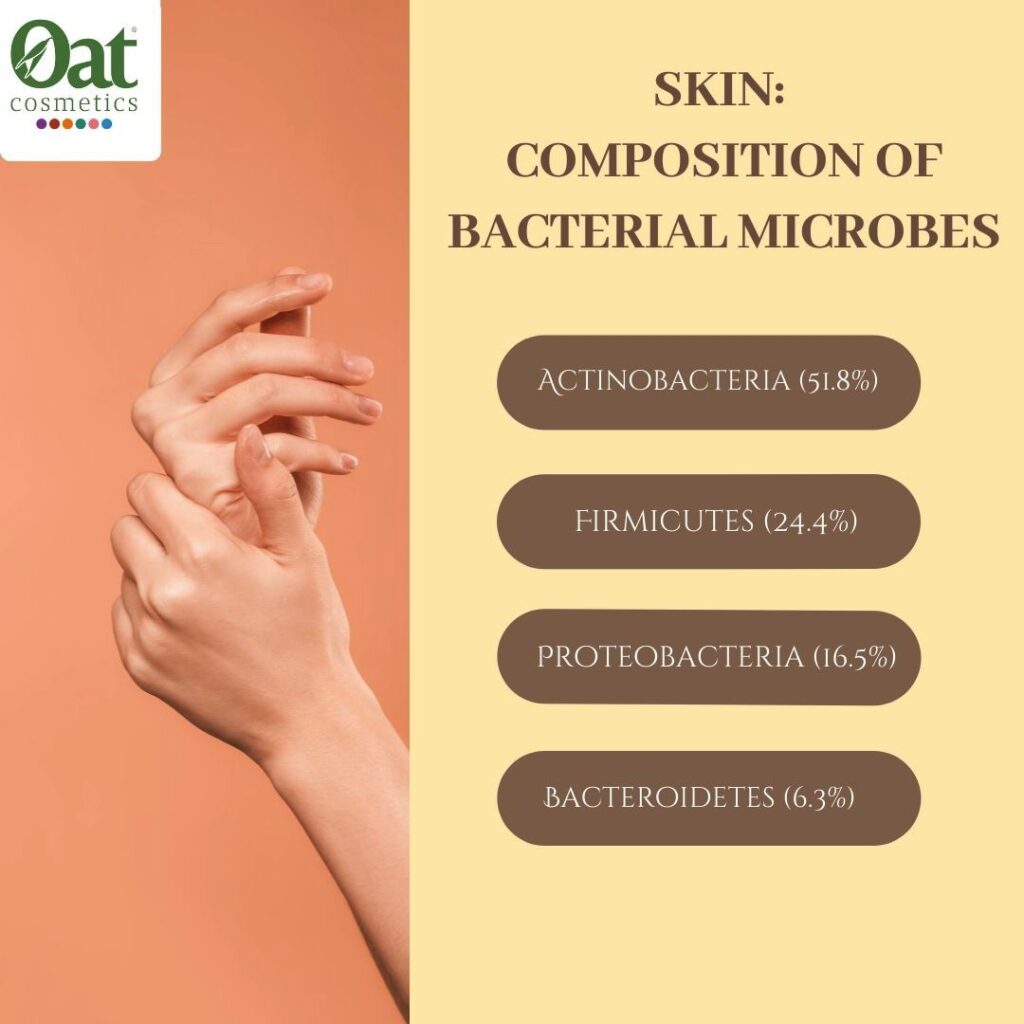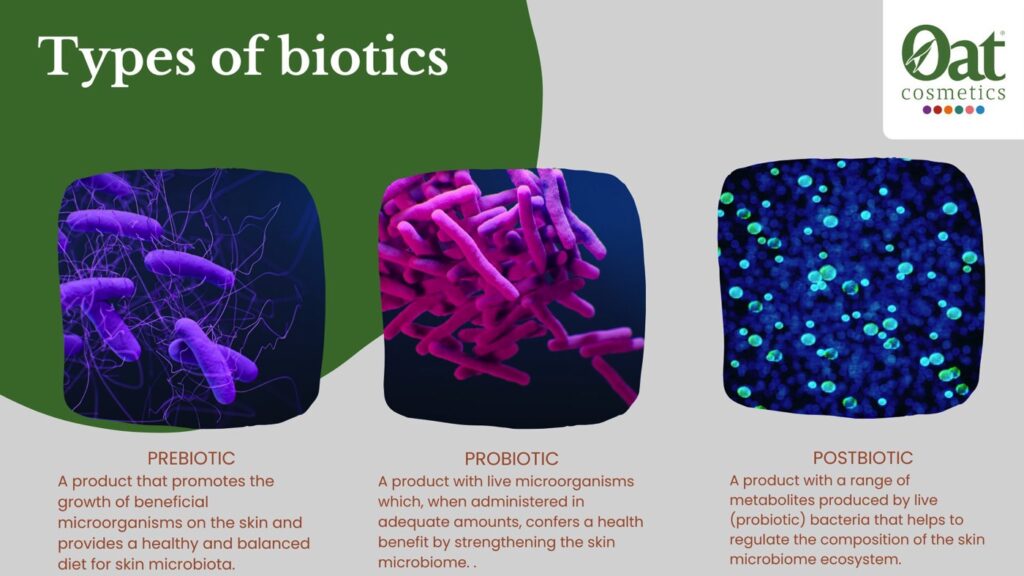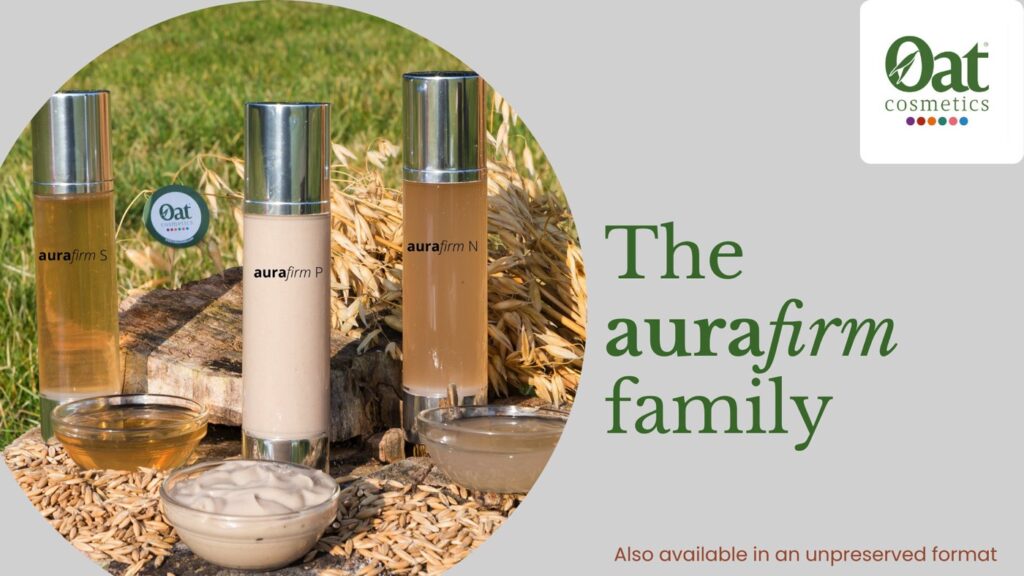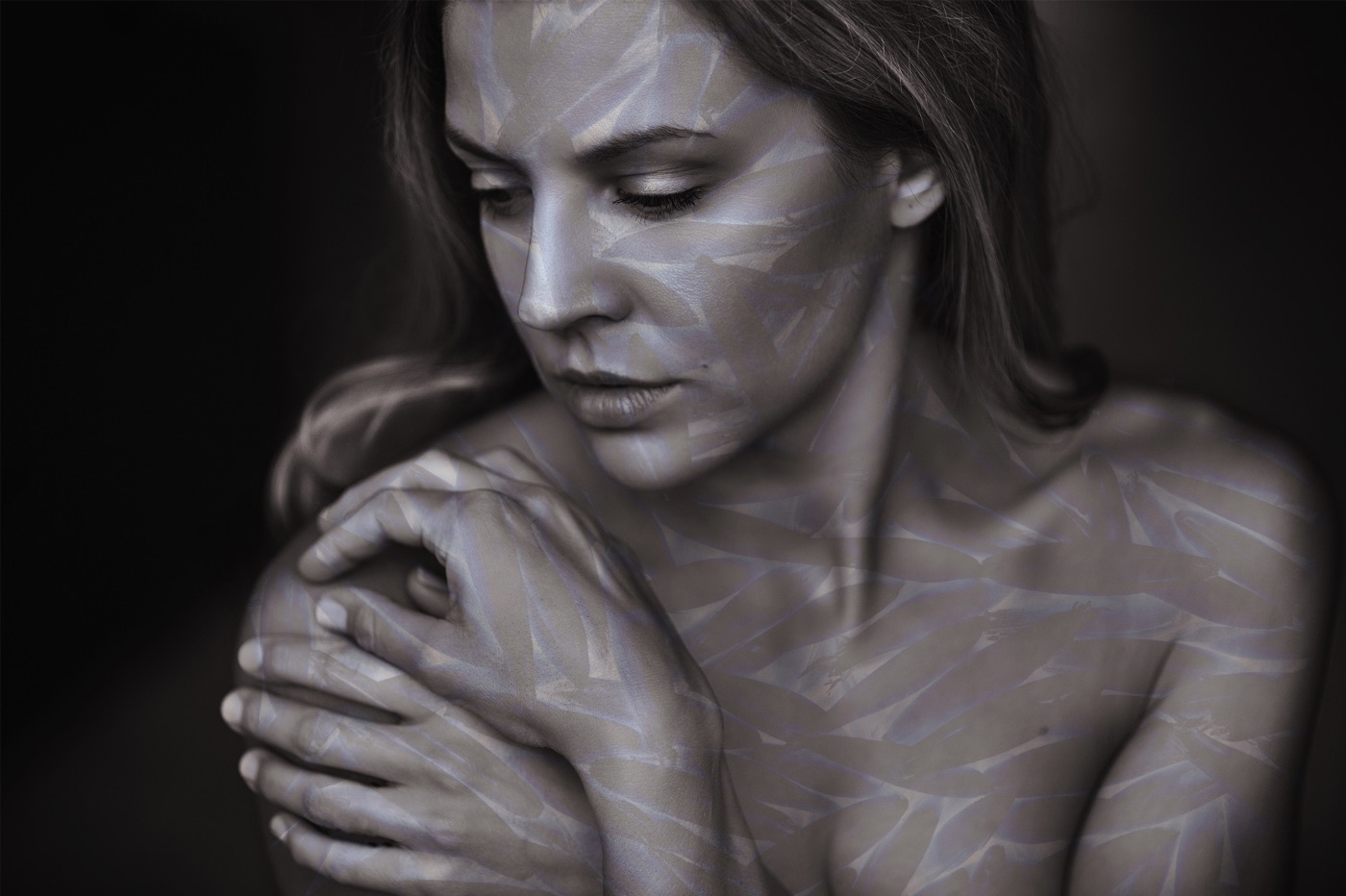Part 3 of our Oat Guide series, today we focus on the skin microbiome. Since the launch of our aurafirm range in 2018, we have carried out numerous studies to better understand how aurafirm can meet consumer needs. We aim to offer active solutions that serve the latest trends and have proven efficacy. Targeting a growing here-to-stay trend, we share this guide as a starter kit for all things skin microbiome.
What is the Skin Microbiome?
The skin is the largest organ in the body. A diverse set of microorganisms inhabit the skin in the superficial layers of the epidermis and they create a complex ecosystem on the skin. The adult human skin hosts an average of 1000 billion bacteria and thousands of species of fungi, arthropods and viruses. The cutaneous microbiota consists of nineteen bacterial phyla but most of the sequences were found to be of the following phyla: Actinobacteria (51.8%), Firmicutes (24.4%), Proteobacteria (16.5%), and Bacteroidetes (6.3%).

What Is the Relevance Of The Skin Microbiome?
The skin microbiome is essential to skin immunity and it influences various metabolic processes. The skin microbiome contributes to the barrier function of the skin and ensures skin homeostasis. The dynamic nature of the skin microbiome has been studied and it has been observed that skin diseases or disorders affect its composition and effect.
Why Is Prioritising the Skin Microbiome Important in Formulation Development?
Protection From Skin Disorders: Skin is the first line of defence for the body. It plays a major role in maintaining immunity. Change in skin microbiota, also known as dysbiosis, causes a majority of skin conditions. Consequently, this causes an imbalance in the skin flora, giving rise to conditions such as eczema, acne, psoriasis, rosacea, and other skin disorders.
Personalised therapy for targeted areas: The diversity in the skin microbiome between various sites in the skin has been studied for a long time and divided into skin microenvironments: oily, moist, and dry. The species have different adaptations to survive on the skin by utilising the nutrients available on the skin’s surface. For example, Malazessia is a fungus that is predominantly found in post-pubescent individuals due to its affinity to lipids produced by the skin at this age. This could pave way for the personalisation of the products as per the desired effects.
Environmental factors: The skin microbiome changes over the course of a lifetime, due to other factors such as ageing, pollution, UV irradiation, and factors such as diabetes. Other factors such as using soaps and detergents alter the skin pH, which influences and alters the microbes on the skin.
In reality, there are numerous factors that influence the function of the skin barrier. They could be taken into consideration while formulating topical skin products.
Is It Possible to Protect and Maintain the Natural Skin Microbiome?
Yes! There are products that can naturally counter dysbiosis and help in maintaining a healthy microbiome. Let’s dig a little deeper into the skin microbiome and understand the Pre-, Pro- and Postbiotics in skincare.

Prebiotics
Molecules that promote the growth of beneficial microorganisms on the skin and provide a healthy and balanced diet for skin microbiota. Examples are ectoin and phenolic compounds.
Probiotics
Live microorganisms when administered in adequate amounts confer a health benefit by strengthening the skin microbiome. The bacteria from the genera Lactobacillus or Bifidobacterium can be good examples of the same.
Postbiotics
Range of metabolites produced by live bacteria during the fermentation process help to regulate the composition of the skin microbiome ecosystem. They include amino acids, AHA, and bioactive peptides.

What is the aurafirm family?
At Oat Cosmetics, we have created a family of fermented active ingredients. We recommend using the aurafirm family in formulations that prioritise restoring and maintaining a healthy microbiome of the skin. The aurafirm family comprises of aurafirm N, aurafirm P, and aurafirm S. Also, available as unpreserved.
How Do We Make aurafirm?
We take special care in manufacturing our products, especially to make sure that they comply with important industry standards. A sustainable plant conforming to the COSMOS ECOCERT specifications is used to manufacture the products. First, we begin with Oat COM as a starting point for aurafirm. Oat COM is wonderfully unique as it is our exclusive patented colloidal oatmeal. We then add a mix of lactobacillus strains which begins the fermentation process in a controlled environment. Fermentation increases the ability of the actives to penetrate the stratum corneum. It breaks down the cell wall structures of the oat, leading to the release or synthesis of bioavailable molecules as various antioxidant compounds and amino acids, thus enhancing the bioavailability. aurafirm does not contain live bacteria as it is pasteurised at a point in the fermentation process, however, these dead bacteria are present with intact cell walls and membranes.
Which aurafirm Grade Is Right for Your Formulations?
aurafirm P
It is our prebiotic active ingredient that protects and maintains a healthy microbiome. Also, we have proven that aurafirm P improves skin radiance and texture significantly after application.
aurafirm N
Our active fermented oat liquid provides a skin-firming and plumping effect. We have used cutting-edge technology to study the effects of aurafirm N on gene expression. This study demonstrated that aurafirm N stimulated gene expression of genes involved in mitigating and preventing extracellular matrix breakdown and epidermal barrier mechanisms. According to the studies, aurafirm N increased the epidermis thickness and stratum corneum thickness, thus proving itself useful in anti-ageing cosmetic products.
aurafirm S
It is our postbiotic active liquid that focuses on restoring the skin microbiome. Harsh cleaning products disrupt the skin microbiome. Our studies have demonstrated that aurafirm S rebalances the skin microbiome by defending it from external aggression by maintaining the natural ratios of the skin’s bacteria.
Learn more about aurafirm
Moreover, in a recent webinar in association with the National Biofilms Innovation Centre and CCUK, James Daybell, Head of Marketing at Oat Cosmetics discussed the relevance of the skin microbiome in baby care products.
Conclusion
To conclude, healthy skin comes from a healthy microbiome. In other words, a perfect balance between the ‘good’ skin bacteria will give rise to healthy, glowing skin. In order to do so, our aurafirm range targets all three: pre-, pro-, and postbiotic effects on the skin.
That’s not all! We have exciting updates on the way, including new data for our aurafirm range! So, don’t forget to subscribe to our mailing list.
To learn more about aurafirm, click here.
References
- Bonté, F., Girard, D., Archambault, J.-C., & Desmoulière , A. (2019, March 20). Skin Changes During Ageing. Biochemistry and Cell Biology of Ageing: Part II Clinical Science. Subcellular Biochemistry, 91.
- Byrd, A. L., Belkaid, Y., & A, J. (1018). The human skin microbiome. Nature Reviews Microbiology, 16, 144-165.
- Hong, Z., Linlin, S., Yuanyuan, R., Xi, T., & W, L. (2020). Applications of Human Skin Microbiota in the Cutaneous Disorders for Ecology-Based Therapy. Frontiers in Cellular and Infection Microbiology, 10. doi:10.3389/fcimb.2020.570261
- Kechagia, M., Basoulis, D., Konstantopoulou, S., Dimitriadi, D., Gyftopoulou, K., Skarmoutsou, N., & Fakiri, E. M. (2013). Health benefits of probiotics: a review. ISRN nutrition, 2013, 481651. https://doi.org/10.5402/2013/481651
- Grice EA et al., Topographical and Temporal Diversity of the Human Skin Microbiome Science May 29, 2009, 324: 1190-1192.
- Labskin. (2020). An introduction to the skin microbiome. Labskin. Retrieved from https://www.labskin.co.uk/wp-content/uploads/2020/02/an-introduction-to-the-skin-microbiome-labskin.pdf
- Schommer, N. N., & Gallo, R. L. (2013). Structure and function of the human skin microbiome. Trends in microbiology, 21(12), 660–668. https://doi.org/10.1016/j.tim.2013.10.001
- Wegh, C., Geerlings, S. Y., Knol, J., Roeselers, G., & Belzer, C. (2019). Postbiotics and Their Potential Applications in Early Life Nutrition and Beyond. International journal of molecular sciences, 20(19), 4673. https://doi.org/10.3390/ijms20194673



